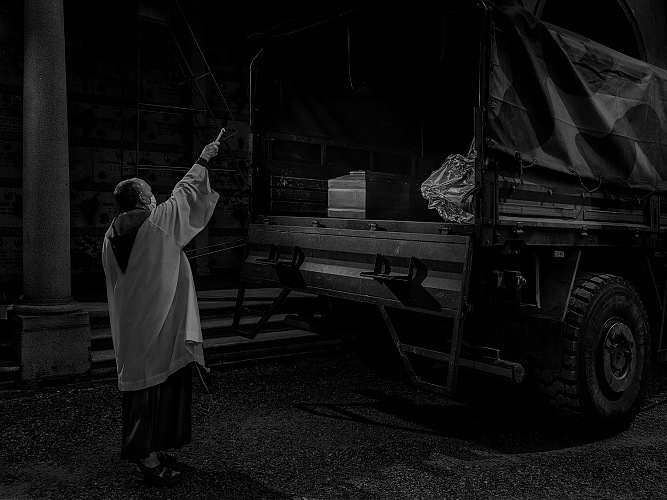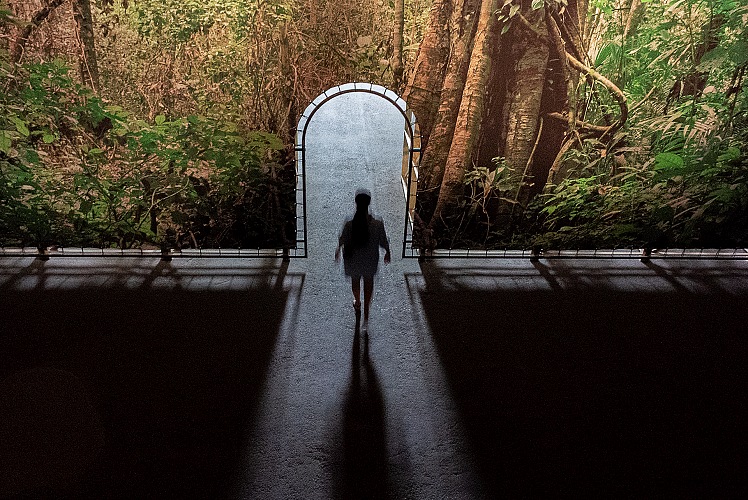Japan
Among the Westerners, gone mad, who decided to study Japanese towards the middle of the eighties circulated a sort of proverb full of wisdom. Many years have passed which is why the quote will be inaccurate in form but not the content. It was said at the time that when a Westerner comes to Japan he understands nothing (with reference not only to the language but to the entire cultural system that suddenly surrounds him); after two or three years, having learned the language and experiencing the every day life of the country, he thinks he understands the soul of Japan. Only after seven or eight years does he realise that he has not understood a thing.
I was reminded of this proverb full of wisdom whilst visiting James Whitlow Delano’s exhibition hosted at the Fortress of Girifalco. The introductory text is overflowing with praise on the work exhibited and raises the level of expectation of the visitor a lot, although a consideration of the matter «He photograps the country – writes the curator and artistic director of Cortona on the Move, Arianna Rinaldo – with the lucid eye of a foreigner, but with a profound knowledge of the country and its culture». What Rinaldo writes is indeed implicitly confirmed by Delano's own words when he says, «Western values are overturned, challenged, even laughed at without malice». That the vision is that of a Westerner is undeniable and probably inevitable. «James' vision on Japanese culture – continues Rinaldo – is profound and insightful. With Mangaland he goes beyond the surface, the superficial icons and stereotypes, showing us the heart and soul of a culture that is often shy and reserved. The deep respect for others and the surroundings, creating a sense of distance that sometimes seems impenetrable. James manages to see through it and to manifest the contradictions and essence of Japanese culture through his unique images». These words, once again, seem to emphasize that the only interpretation we are able to make is centred on Western culture. The contradictions which are referred to are only so if these are placed in relationship with our synchronic vision. It would be enough to reverse the vantage point to get the opposite result. The risk of exhibitions and apparatuses such as those in question is to reiterate clichés about a country whose history is objectively far from ours, with everything that can arise from this. The greater the danger the greater the ignorance, in the etymological sense, of the viewer related to the topics that he is faced with.
Not such small doubts are raised even for the descriptions accompanying the exhibition and which we suppose come directly from the author. It is true that we should not necessarily await a Journalistic type of attention in the captioning at an exhibition, but not infrequently the emptiness seems to prevail futility, when it is not entwined in the confusion between communication and meaning. A recurring element in the Black Tsunami is, for example, the emphasis in the caption of the presence of cherry trees, which gives the value of rebirth after the tragedy. The fact that Japan is full of cherry trees and red maples does not necessarily mean that, before the tragedy of the tsunami, we must ascribe to them a particular value. Almost as if you were to demonstrate their proficiency in a foreign culture that still, as good Westerners, we are judging in a more or less paternalistic way.
As for the photographs these reflect the individuality of Delano, loaded with vignetting and soft focus effects in print. Nothing is new, from any point of view, under a formal term. Who loves Delano (as this writer, probably spoiled by the personal knowledge of the author) continue to do so, on the contrary those who do not appreciate him will not change their mind. It would be rather interesting to ask some Japanese people if they recognise themselves in the image that comes out of his country from this exhibition. Overall, as far as I am concerned, perplexity, so much perplexity...
- - -
JAPAN
by James Whitlow Delano
Fortezza di Girifalco | until August 31th, 2015
admission fee: 4,00 €
published on 2015-07-21 in NEWS / EXHIBITIONS
COTM COTM2015more in EXHIBITIONS
categories
EXHIBITIONS CONTEST WORKSHOP EVENTS MELTINGPOT BOOKS PORTFOLIO VIDEO ONGOING THEMATICPATHS YTOI OPINIONS FPART COVER READINGIMAGES SMARTFOLIO FPBLOG FPLAB
recent news
FPmag
editor in chief Sandro Iovine | sandro.iovine@fpmagazine.eu - senior writer Stefania Biamonti - web developer Salvatore Picciuto | info@myphotoportal.com - linguistic coordination Nicky Alexander - translations Nicky Alexander, Rachele Frosini - contributor Davide Bologna, Mimmo Cacciuni Angelone, Laura Marcolini, Stefano Panzeri, Pio Tarantini, Salvo Veneziano - local Lazio correspondent Dario Coletti local Sardinian correspondent Salvatore Ligios - local Sicilian correspondent Salvo Veneziano - editorial office via Spartaco, 36 20135 Milano MI | redazione@fpmagazine.eu - phone +39 02 49537170 - copyright © 2015 FPmag - FPmag is a pubblication of Machia Press Publishing srl a socio unico, via Cristoforo Gluck, 3 20135 Milano MI - VAT no. 07535000967 C.F. (TAX code) 07535000967 - Copyright © 2015 FPmag - Registered at Tribunale di Milano No. 281 on the 9th September 2014
















































